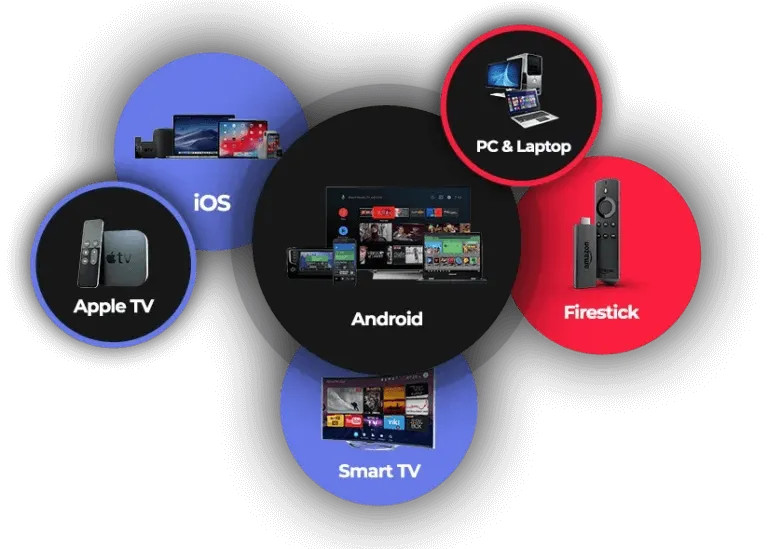How IPTV Works: A Step-by-Step Overview to Net Method Television Modern Technology
Internet Protocol Television (IPTV) has actually revolutionized the method we take in tv material, supplying a brand-new realm of opportunities through the power of the web. Comprehending the complexities of just how IPTV works can shed light on the technology that drives this innovative type of media distribution. From the essential principles of IPTV to the complicated process of material distribution, each step plays an essential role in ensuring a smooth watching experience. In this guide, we will certainly uncover the underlying devices that make IPTV a remarkable combination of innovation and amusement.
IPTV Fundamentals
In recognizing IPTV essentials, it is pivotal to realize the fundamental operations of this technology in supplying television web content over the web. IPTV, which stands for Web Procedure Tv, makes use of Internet Protocol (IP) networks to transmit tv material to customers' tools. Unlike conventional techniques of broadcasting television web content via wire or satellite signals, IPTV streams media with high-speed internet connections.

Additionally, IPTV enables interactive capacities, such as video on demand (VOD) and electronic program guides (EPG), boosting the user experience by providing more control and flexibility in accessing material. In general, comprehending the basics of IPTV establishes the structure for exploring its even more innovative capabilities and the benefits it provides to contemporary tv consumption.
Material Delivery Refine
Efficient web content distribution in IPTV systems includes a well-structured procedure that ensures seamless transmission of television web content over IP networks. The web content distribution process in IPTV begins with the creation of the video clip material, which is then inscribed right into electronic style suitable for IP transmission.

Middleware Performance
With the integration of middleware, IPTV systems gain improved performance that enhances individual interaction and material administration. Middleware acts as an important part that links the space between the customer interface and the back-end facilities, helping with seamless communication and communication within the IPTV system. One of the essential features of middleware in IPTV is to allow individualized user experiences by providing features such as interactive program guides, video-on-demand solutions, interactive advertising and marketing, and user choices management. By systematizing these performances with middleware, service carriers can provide a much more vibrant and tailored IPTV experience to their customers.

Gadget Compatibility
Offered the essential role of middleware in making it possible for smooth interaction and web content administration in IPTV systems, an important aspect to take into consideration is the compatibility of gadgets made use of for accessing the IPTV solutions. Tool compatibility is important for guaranteeing a smooth customer experience and optimum efficiency when accessing IPTV web content.
In the context of IPTV, gadget compatibility refers to the ability of a device to effectively connect with the IPTV solution, present material appropriately, and sustain the essential procedures and codecs for streaming video clip material online. Various devices, such as wise Televisions, set-top boxes, smartphones, tablet computers, and computers, may have varying degrees of compatibility see page with IPTV solutions.
To guarantee a seamless viewing experience, it is essential for customers to choose gadgets that work with the details IPTV solution they are making use of. Additionally, IPTV solution suppliers should use support for a vast array of gadgets to cater to the varied needs of their customer base. By prioritizing gadget compatibility, both individuals and solution suppliers can boost the total IPTV experience.
Quality of Solution (QoS)
Taking into consideration the essential function see post of preserving a high requirement of performance and dependability in IPTV systems, making certain consistent Top quality of Service (QoS) continues to be a basic aspect of the user experience. QoS in IPTV refers to the capability of the system to supply content with marginal interruptions, high resolution, and quickly filling times.
Provider use QoS mechanisms such as traffic prioritization, buffering, and mistake correction to maintain a secure IPTV solution. By focusing on IPTV web traffic over much navigate to these guys less time-sensitive information, companies can ensure smooth playback also throughout height use hours. Buffering helps make up for network changes, while mistake correction techniques boost information honesty.
Constant surveillance and optimization of QoS specifications are important to adapt to altering network problems and customer needs. Ultimately, a durable QoS framework is crucial for providing a smooth and pleasurable IPTV experience to customers.
Final Thought
Finally, IPTV operates via the transmission of television content over web method networks. The innovation involves a systematic process of content shipment, helped with by middleware performance to make certain compatibility across numerous tools. Quality of Service plays a crucial duty in keeping the efficiency and integrity of IPTV services. Recognizing the fundamental principles of IPTV is necessary for comprehending the intricacies of this ingenious television modern technology.